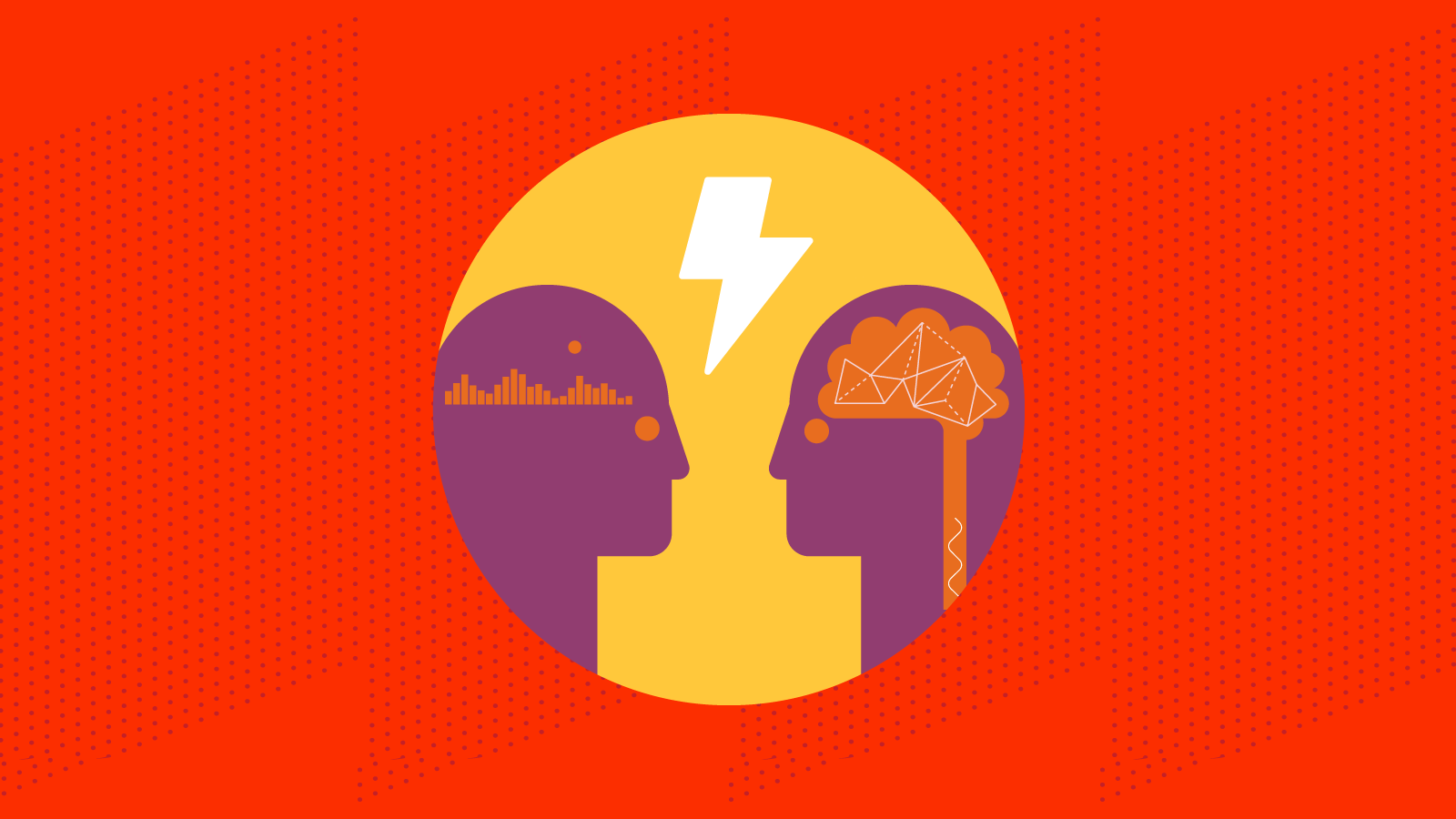Email Development
The Pros and Cons of Email Coding with Artificial Intelligence

Email Development

The world feels like it’s changing faster than you can say “recurrent neural network.” Generative artificial intelligence (AI) is a driving force behind that change. Adoption of AI technology, including OpenAI’s ChatGPT, Google’s Bard, and image generators like DALL-E have everyone talking and wondering.
What will the world of work look like within the next decade? What will it mean to be an email geek? Will brands still need developers to code campaigns, or will bots eventually be able to take on the challenges of email?
We don’t have all the answers, but we have spent some time thinking about the future of email and where we go from here.
Not long after ChatGPT exploded onto the scene, we started having discussions with the team at ActionRocket about AI’s impact on email marketing. As it turned out, two of the biggest email geeks on the block, Megan Boshuyzen and Jay Oram, were already having a spirited debate about the pros and cons of using artificial intelligence in email.
We decided to bring the two of them together (virtually) to hash out the topic in a live webinar. Did you miss it? No worries. We’ve got the replay for you right here:
For more on this topic, check out ActionRocket’s highlights from both of our virtual debates on the future of email and artificial intelligence.
There are plenty of people who are excited about the possibilities of AI. Others are skeptical about its capabilities and concerned about the implications it could have on work, society, and life in general.
Jay and Megan took on some big questions in their debate. Here’s a recap of their insights and opinions:
For email developers, this is likely the first question that comes to mind: Can a tool like ChatGPT do your job as well as you can?
Jay got us started by clearing things up. He says the truth is – ChatGPT doesn’t know anything about coding emails. However, it has been trained on tons of data and information so that it can attempt to answer questions and respond to prompts. Some of those prompts can be quite complex.
When both Jay and Megan started playing around with ChatGPT for generating email code, they each noticed that how you prompt the technology makes a substantial difference. Because there are so many nuances to email development, it’s rare for ChatGPT to get things right on the first try.
Megan says ChatGPT is relying on your knowledge of email coding to guide it. If you don’t know email coding 101, how can you be as specific as needed?
When it comes to coding emails, if you’re going to leverage ChatGPT you really need to learn those basics and fundamentals before you jump in. It should not be the main way you’re coding emails or you’re going to run into trouble way too fast. And you may be putting bad code out there.

While Jay totally agreed with that point, he also explained that this is not necessarily a problem with the AI as much as it is with the person using it. “Is it the tech getting it wrong, or did you fail to use a strong enough prompt to get the code you really needed?”
The bottom line: Yes, ChatGPT and other forms of generative AI may be able to produce email code. However, at this point, the quality and reliability of that code are highly dependent on the prompts entered and the knowledge of the user.
One of the big promises of artificial intelligence is efficiency, including the ability to save people tons of time. So, what did our debate panelists think about ChatGPT’s time-saving potential?
Megan wasn’t that impressed. She told a story about trying to use the tool to help her debug and troubleshoot an email that wasn’t functioning as expected on iOS devices. Because she wasn’t sure what to ask ChatGPT, Megan felt she spent too much time spinning her wheels. In the end, she ended up finding a fix on the website CSS tricks.
Of course, while ChatGPT gets tons of attention it is far from the only AI tool available. Earlier this year, Jay and the team at ActionRocket conducted an experiment in which they tried using a collection of artificial intelligence platforms to build an email campaign. That included using AI tools for the code, copy, and visuals. He used the output the tools generated without changing anything.
The result was a responsive email that wasn’t perfect by any means, but it worked in most clients. Here’s the thing, Jay said it only took them about two hours to do all of it. And ChatGPT coded a basic template with all the elements of a standard email in no time at all.
As a developer, you still need to have that eye for the code. But speed wise, it can really help you get a template that basically looks how you want it to in minutes… It spat out this template in one go.”

Megan remained skeptical. Her opinion is that you’ll spend more time conducting quality assurance and fixing code than you would if you just did it yourself from scratch. However, she does see a use for AI in very specific areas, such as generating alt text for images in emails.
The bottom line: It looks like AI tools for email development could help reduce time spent on mundane, repetitive coding tasks. But Jay and Megan say a more realistic approach to efficiency involves implementing a component-driven email design system. And in the future, training AI on your design system could be a helpful solution that saves time and creates consistency while allowing non-coders to request emails.
You probably already know the answer to this question. Any and all types of technology have been used for both good and evil, and email AI will be no different.
Unfortunately, Jay says he’s already spotted people using AI for shady purposes in inboxes. As he was searching for AI platforms to use in ActionRocket’s experiment, he came across solutions designed for cold sales emails and unsolicited, annoying email marketing. In other words, AI for spamming.
There’s also been news about how AI could lead to an onslaught of email phishing, which is pretty scary. But at the same time, artificial intelligence could also be used to identify and stop email phishing.
Megan’s concerns revolve more around how the rise of AI could impact society and different groups of people. She agrees with the sentiments of tech leaders who signed an open letter calling for a moratorium on AI development.
As AI just gets huge across everything everywhere, I really think we do need to take a step back and think about how this technology affects us as a society and affects people’s jobs and how it could hurt or help folks.

If the artificial intelligence used in email marketing improves, Megan does see the opportunity for it to make a positive difference. For example, she and Jay both discussed how developers could use AI to help them code emails that are more accessible.
The bottom line: There’s no doubt that email AI has the potential to do both harm and good. The real question to ask is how you and your company will choose to use it. Don’t let greed and the need for speed cloud your judgement. Slow down – and carefully consider how AI can make email better.
We’re only at the very beginning of the emergence of artificial intelligence in our everyday lives. In all likelihood, it’s going to get smarter, faster, and more advanced. So, what does that mean for people with jobs that AI can do too (which is a lot of stuff)?
At this point, the way we use AI and how it changes the way we work is up in the air. Many are suggesting that prompting AI could become a marketable job skill. Think of the way a film director guides the cast and crew or a conductor leads a symphony of instruments. Is writing effective generative AI prompts much different?
Could we use the same conductor/director approach in email development? Megan doesn’t think so. In fact, she thinks the market could get flooded with email devs who rely too much on solutions like ChatGPT. That’d make the skilled human coders even more valuable.
Jay agrees that experienced email developers will still be required for complex tasks like coding interactive emails, but he sees a bright future with AI being used for assistance and collaboration. For example, early in the webinar, he mentioned GitHub Copilot, which was trained on people’s code and uses AI to provide real-time coding suggestions.
I do think AI will start picking up things that are on the edge and things that maybe we don’t need to be there for… I think AI is not going to take over the full development job, but it’s probably going to take over little things.

Another point Megan and Jay agree on is that existing technology hasn’t made other email marketing skills obsolete. A brand could use a drag-and-drop email editor, but if they really want to deliver a unique campaign, they’re going to need someone who can code better than ChatGPT.
The bottom line: Coding experience and the ability to think outside the box so you can try new things will always be valuable. It’s still too early to tell if AI will eventually replace developers. For now, it’s best to look at AI as just another tool to help you do your job.
Also known as GIGO, the phrase “garbage in, garbage out” comes straight out of the early days of computer science. It means bad input leads to bad output. That’s clearly true for the way we’ll use generative AI for email marketing.
During the Q&A of our webinar, Mark Robbins mentioned the possibility of AI solutions learning bad habits around email accessibility. The Email Markup Consortium (EMC) evaluated thousands of campaigns for accessibility and found that more than 99% had serious or critical issues.
What happens if AI gets trained on email code that fails to follow best practices? Because human beings aren’t perfect, it’s unlikely that generative AI will ever be perfect either. It’s interesting to think that what we put out there in the world could come back to us through artificial intelligence.
So, let’s not put garbage out there. Let’s put our best emails forward every time.
Whether you’re using AI to help you code emails or doing it all yourself, mistakes are bound to happen. Plus, you never really know how an email client will render your campaigns. That’s where Sinch Email on Acid comes in. Use our email testing platform to find and fix rendering issues on 100+ clients and devices before you hit send. You can also use Email on Acid to test inbox display, links, deliverability, and accessibility. Get some send button confidence with unlimited email previews on every plan.